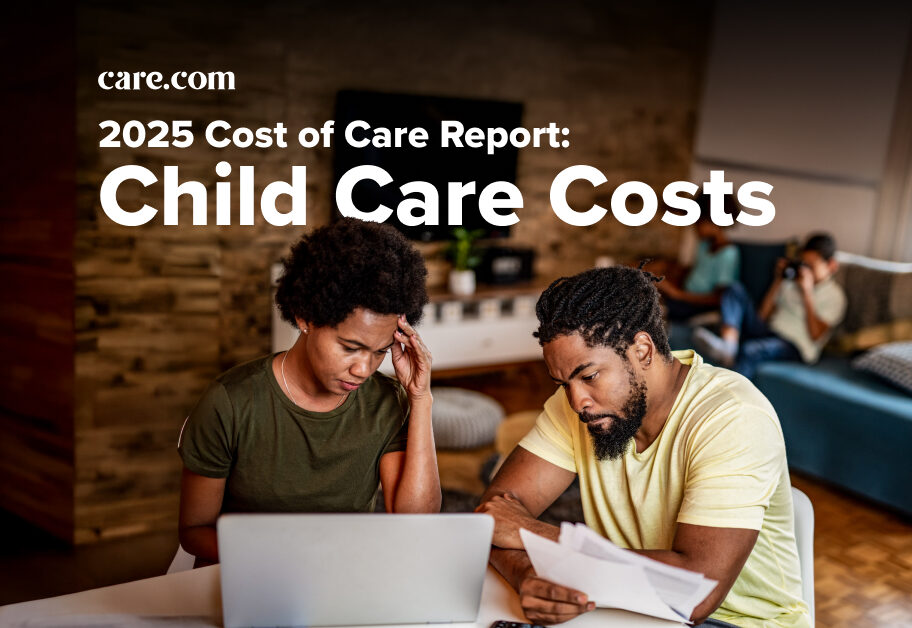Child care is necessary for every family. All parents must find a solution that fits their unique situation, and cost is often the biggest factor driving decision-making. In fact, more than 40% of families spend over 15% of household income on care. To see how different American families are juggling the cost of care, we’re asking parents how they spend their money each month — and how, specifically, they budget and save for those all important child care expenses. All answers are anonymous. Our financial expert also weighs in on each family’s big-picture strategy.
We spoke with two working parents from Dallas. As the couple prepares to welcome their second child, Mom plans to take an extended period of time off of work and be a stay-at-home parent. This family is currently making a relatively high monthly income; however, it took careful budgeting — they use the You Need A Budget (YNAB) app — and career advancements to make it possible for Mom to leave her job with her second child.
“The cost of child care is a complicated issue. It has been a huge expense for us for the duration of parenthood as we have both always worked full time,” she says. “As young parents who were just starting out in their careers, it was tempting for one of us to leave the workforce when we had our first child to avoid the child care payment. However, the longer we worked, the better our pay became, so the burden became less of a percentage of our total income.”
Family makeup: Two parents, 6-year-old child, second baby on the way
Location: Dallas, Texas
Parent #1:
- Age: 33
- Occupation: Director, medical association
- Monthly gross income: $14,166
Parent #2:
- Age: 31
- Occupation: Teacher
- Monthly gross income: $4,000
Child care type: Before/after school care
- Full time or part time: Part time
- Hours per week: 20
Here are the strategies this family has taken to plan and pay for child care and where their money goes after that lofty expense.
Strategy #1: Space your kids out
Although it may not be an option for every family, this family’s expenses and future child care plans have been helped considerably, Mom says, by the fact that she and her husband were willing and able to have their children several years apart. “We only had one child for the first nearly seven years, so only having one day care payment was a lot easier to withstand versus if we had multiple children close together,” she explained.
Strategy #2: Budget for child care before you have to pay
Though their total child care costs are lower at the moment, their first child was enrolled in day care full-time from infancy until she started Kindergarten — an expense that Mom likens to “a second mortgage.” They paid $950 per month for their daughter to attend a full-time day care center five days a week.
To prepare for that expense, the couple started setting money aside for child care before their oldest child was even born. “We ‘practiced’ having the day care payment already in our budget so we could get used to it, and we put that money each month into our savings,” she explains.
Strategy #3: Full-time work x 2 pays off
The single biggest factor, Mom says, in being able to afford child care has been having two stable incomes and choosing to remain at work full time while raising her first child.
“Because we had two incomes coming in,” she says, “we were able to become debt-free, invest both for our future (retirement), and for our daughter’s (college savings). Having two incomes also provides a lot more security in case one parent loses their job.”
Tips from a financial expert:
Jen Mulder, financial planner and owner of Pathway Financial Services in Los Angeles, points out the pros of this couple’s approach: “Staggering the birth of their children to avoid having both in day care has paid off. They can easily survive on Parent No. 1’s income and allow Parent No. 2 to stay home.”
At the same time, “the downside of this strategy is that Parent No. 2 will lose years in the paid workforce, so their advancement and lifetime earnings will be less than if they had continued working full time,” Mulder says. For this reason, she recommends they “contribute more to retirement during the gap years to make up for the lost additions to Parent No. 2’s pension and Social Security.”
Monthly budget
|
Monthly gross income |
Monthly take-home |
|
|
INCOME: |
||
|
Parent #1 |
$14,166 |
$10,500 |
|
Parent #2 |
$4,000 |
$3,200 |
|
$18,166 |
$13,700 |
|
|
INVESTMENTS/SAVINGS CONTRIBUTIONS: |
||
|
Investments |
$350 |
|
|
College savings |
$450 |
|
|
Retirement |
$775 |
|
|
Company match |
$125 |
|
|
Roth IRA |
$916 |
|
|
Personal savings |
$500 |
|
|
Total investments/ savings |
$3,116 |
|
|
EXPENSES: |
||
|
Child care |
$450 |
|
|
Rent/mortgage |
$1,100 |
|
|
Total utilities |
$200 |
|
|
Health, dental & vision insurance |
$600 |
|
|
Cell Phones |
$50 |
|
|
Groceries |
$500 |
|
|
Credit cards |
$0 |
|
|
Car loans |
$0 |
|
|
Car insurance |
$150 |
|
|
Gas |
$150 |
|
|
Commuter fees/parking |
$200 |
|
|
Kids activities |
$80 |
|
|
Cable or equivalent TV services |
$50 |
|
|
Student loans |
$0 |
|
|
Entertainment |
$200 |
|
|
Clothing |
$50 |
|
|
Total expenses |
$3,780 |
|
|
Monthly take-home |
$13,700 |
|
|
Total investments/ savings |
-$3,116 |
|
|
Total expenses |
-$3,780 |
|
|
Remaining cash flow |
$6,804 |
More 2019 real cost of care interviews with families:
Read next: This is how much child care costs in 2019





